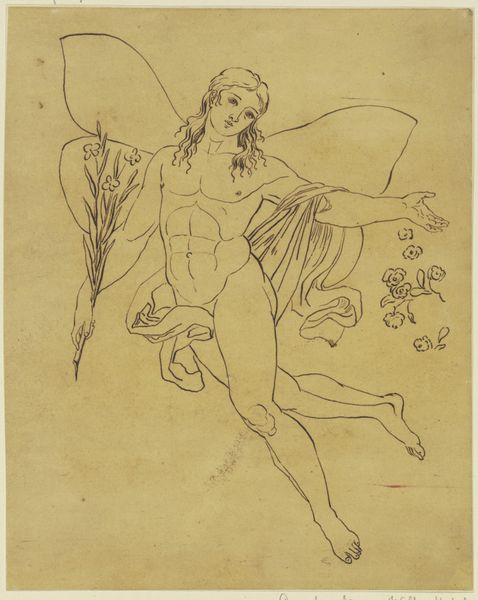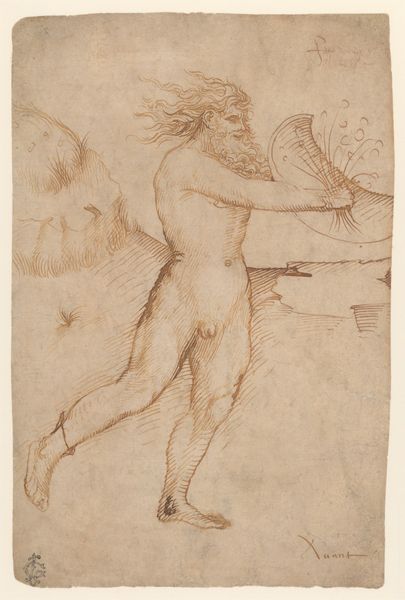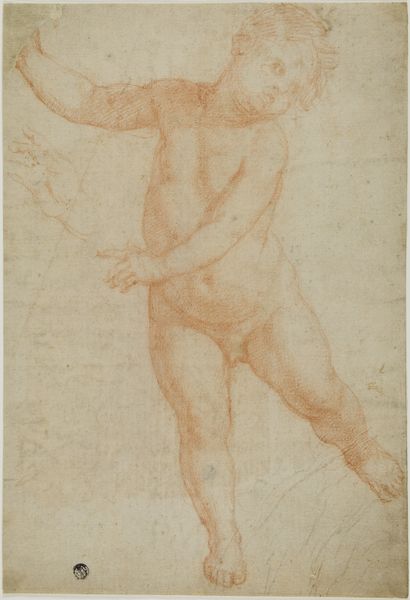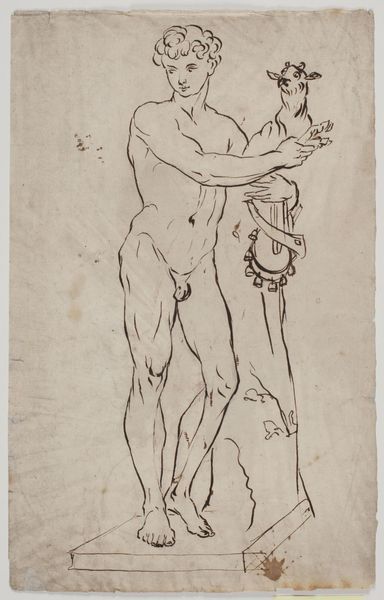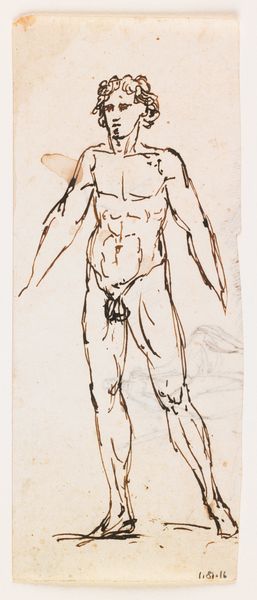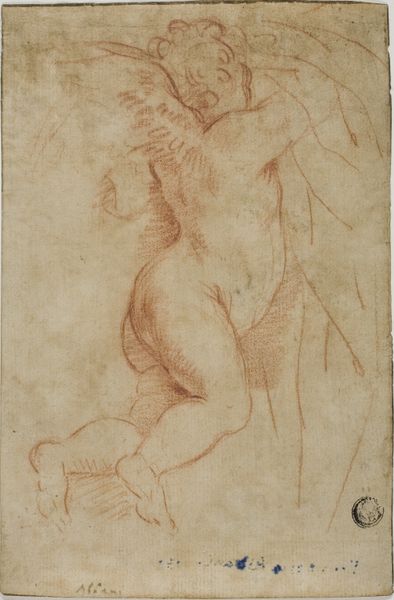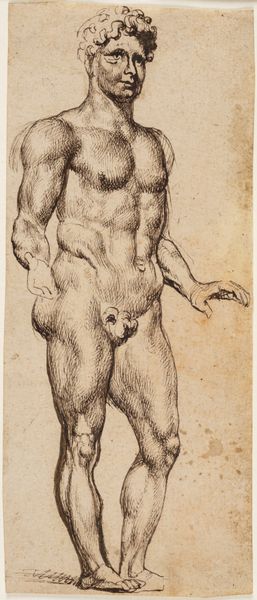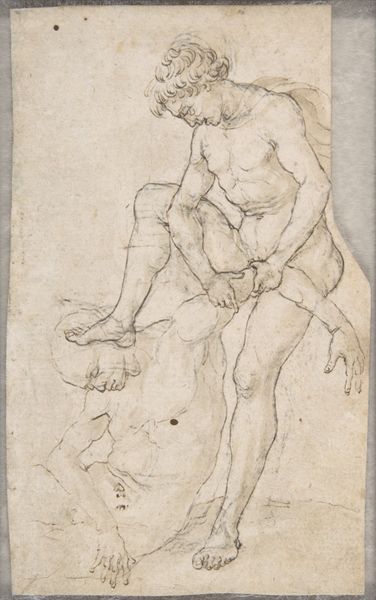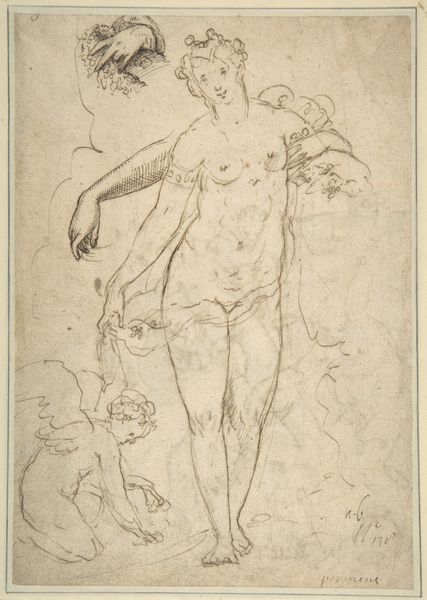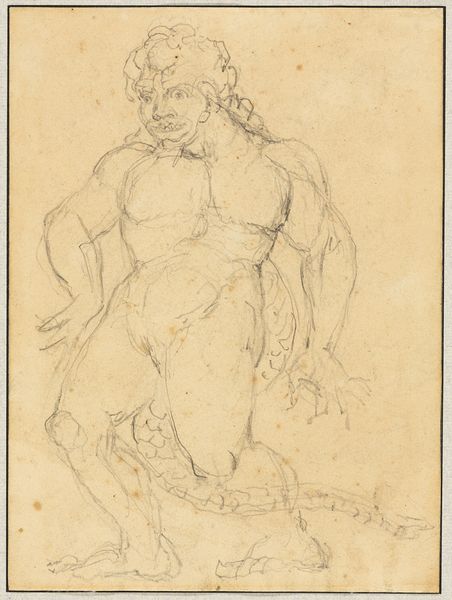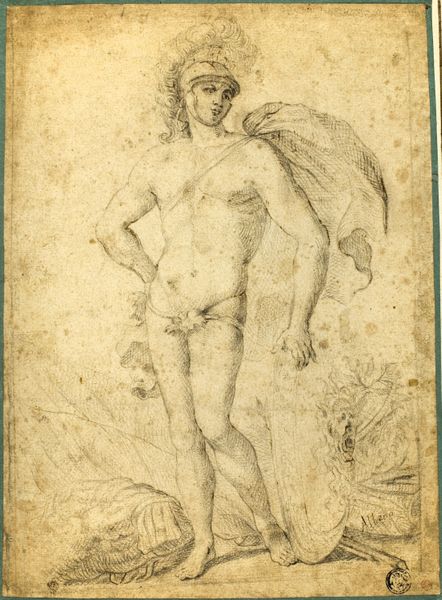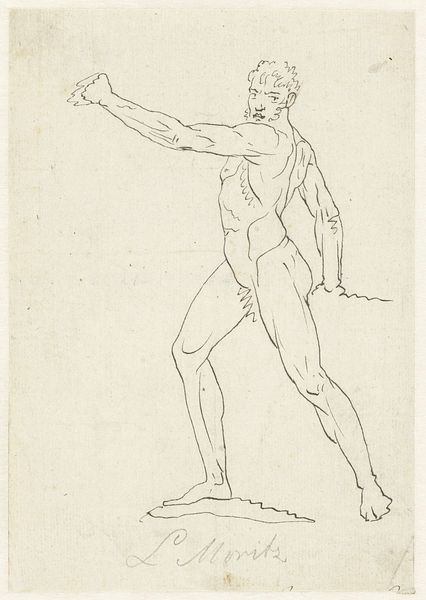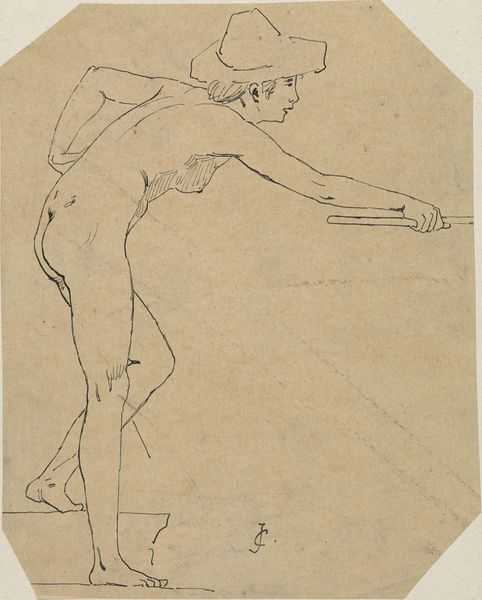
drawing, print
#
portrait
#
drawing
# print
#
figuration
#
11_renaissance
#
cupid
#
romanticism
Dimensions: 7-13/16 x 5-3/8 in. (19.9 x 13.7 cm)
Copyright: Public Domain
Curator: This drawing, "Cupid," from the 19th century and now at the Metropolitan Museum of Art, presents us with a familiar, almost universal figure. What's your first impression? Editor: Raw, almost… incomplete? I’m struck by the medium: a print or drawing reduced to its barest outlines on a piece of paper aged and stained with time. The materiality whispers of process, like we're witnessing a study, maybe preparatory work for something grander. Curator: Interesting. The drawing seems to hint at something primordial about love itself, an elemental force captured in those very lines. The figure of Cupid has deep roots, traceable back to Eros in Greek mythology. In his representations throughout time, he appears almost as an innate feature of the psyche, ever present across epochs and continents. The image acts as an access point to a complex web of symbols. Editor: Yes, but consider the socioeconomic aspect, if you will. Printmaking made Cupid – this symbol of love and sometimes, capricious desire– widely available. Suddenly, not only the elite could possess representations of such powerful cultural imagery. How might this availability and mass consumption transform his symbolism? The very *process* of dissemination is significant. Curator: Precisely. Romanticism of that era was completely entangled in cultural consciousness, affecting art, literature, and even social reform. And, whether printed or drawn, Cupid’s arrow speaks of emotional ties that bind cultures, a recognition that feelings have weight and agency across diverse belief systems. Editor: But that distribution mechanism also commodified those very emotions! It presented an idealized love. I see those thin lines, repeated, multiplied… isn’t there also something potentially exploitative there? It creates a visual *product* with potentially radical consequences, packaged up and sold. Curator: Food for thought. Viewing this simple rendering allows us to recognize love's continued power. The ability to trace the image of Cupid from antiquity, through the Romantic period and now, reflects our complex need to capture love, give it form, understand, and replicate. Editor: And that, to me, points to our labor in constantly reshaping that image. In the making and consuming we are creating that. Curator: Absolutely, it creates a continuum of transformation.
Comments
No comments
Be the first to comment and join the conversation on the ultimate creative platform.
